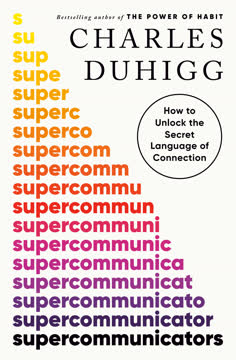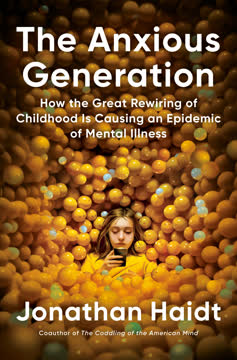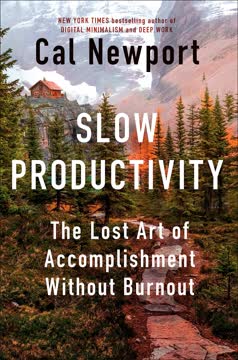Key Takeaways
1. The mentor mindset combines high standards with high support
"It seems like everywhere you turn, you hear older adults—Gen Xers, millennials, and boomers—describing young people today in dark and despairing terms."
Challenging traditional views. The mentor mindset rejects the common perception that today's youth are unmotivated or entitled. Instead, it recognizes that young people are capable of impressive achievements when given the right guidance and support. This approach balances high expectations with understanding and assistance.
Key elements of the mentor mindset:
- Maintaining rigorous standards for performance
- Providing emotional and practical support to meet those standards
- Believing in young people's potential to grow and improve
- Offering constructive feedback and opportunities for development
By adopting a mentor mindset, leaders can inspire youth to reach their full potential while building strong, trusting relationships. This approach proves effective across various contexts, including education, parenting, and professional mentoring.
2. Young people crave status and respect, not just self-interest
"When we tell, we launch a conquest of meaning. We are saying: my meaning matters; yours doesn't."
Understanding deeper motivations. Contrary to popular belief, young people are not solely driven by short-term self-interest or material rewards. They have a fundamental need for status and respect, especially from peers and authority figures. This desire for social recognition often outweighs immediate gratification.
Key aspects of youth motivation:
- Seeking opportunities to demonstrate competence
- Valuing meaningful contributions to their communities
- Desiring recognition for their abilities and efforts
- Responding positively to challenges that offer potential for growth
By recognizing and addressing these deeper motivations, mentors can more effectively engage and inspire young people. This approach aligns with young people's intrinsic desires, fostering greater commitment and effort in pursuits that offer opportunities for earning respect and status.
3. Transparency and questioning foster trust and motivation
"Authentic questions with uptake are effective, in part, because they build relationships."
Building stronger connections. Transparency about intentions and the use of authentic questioning techniques can significantly improve relationships with young people. These strategies demonstrate respect for their perspectives and foster a sense of collaboration.
Effective communication strategies:
- Clearly explaining the reasoning behind expectations or decisions
- Asking open-ended questions that show genuine interest in their thoughts
- Actively listening and incorporating their input into discussions
- Using "mirroring" techniques to validate their contributions
By employing these approaches, mentors create an environment of mutual respect and understanding. This leads to increased trust, motivation, and willingness to engage in challenging tasks or discussions.
4. Stress can be reframed as enhancing rather than debilitating
"Although stressful experiences feel unpleasant in the moment, they are the path through which everyone who ever became really good at something got to where they are."
Changing perceptions of stress. Rather than viewing stress as inherently harmful, it can be reframed as a natural and even beneficial part of growth and achievement. This shift in perspective can significantly impact how young people approach challenges and perform under pressure.
Benefits of reframing stress:
- Improved performance in high-pressure situations
- Increased resilience and ability to cope with difficulties
- Greater willingness to take on challenging tasks
- Enhanced learning and skill development
By teaching young people to view stress as a resource rather than a threat, mentors can help them harness their body's natural responses to improve performance and well-being. This approach aligns with recent scientific findings on the positive potential of stress when properly understood and managed.
5. Purpose and belonging are powerful motivators for youth
"Putting those two facts together—nobody wants to eat Vegemite, but eating it is possibly good for you in the future—then eating Vegemite sounds like just about everything adults ask young people to do for their well-being."
Tapping into deeper motivations. Young people are more likely to engage in challenging or unpleasant tasks when they understand the broader purpose behind them. Additionally, feeling a sense of belonging within a group or community can significantly boost motivation and persistence.
Strategies for fostering purpose and belonging:
- Connecting tasks to meaningful goals or values
- Creating opportunities for contribution to a larger cause
- Fostering a sense of community and shared identity
- Acknowledging and validating individual experiences and perspectives
By helping young people find purpose in their actions and feel part of a supportive community, mentors can inspire greater engagement and commitment. This approach addresses fundamental human needs for meaning and connection, leading to more sustained motivation and effort.
6. Inclusive excellence promotes achievement for all backgrounds
"Inclusive excellence grows out of the belief that someone's potential to contribute isn't reduced to a single number on a test like the GRE."
Broadening opportunities for success. Inclusive excellence recognizes that talent and potential come in many forms and from diverse backgrounds. By creating environments that support and challenge all individuals, organizations and institutions can foster higher levels of achievement across the board.
Key principles of inclusive excellence:
- Recognizing and valuing diverse strengths and perspectives
- Providing targeted support to address specific challenges
- Maintaining high standards while offering flexible pathways to success
- Creating a culture that celebrates diverse achievements
Implementing inclusive excellence practices not only benefits individuals from underrepresented groups but also enhances the overall quality and creativity of organizations. This approach leads to more dynamic, innovative, and successful environments for all participants.
7. Mentoring for future growth solves the "therapist's problem"
"Mentoring for future growth happens when the processes we use with young people instill skills or ways of thinking that continue to help them after they leave our care."
Long-term impact. Effective mentoring goes beyond addressing immediate challenges or achieving short-term goals. It focuses on developing skills, mindsets, and strategies that continue to benefit young people long after they've left the mentor's direct influence.
Strategies for mentoring for future growth:
- Teaching generalizable skills and problem-solving approaches
- Fostering self-reflection and metacognitive abilities
- Encouraging autonomy and self-directed learning
- Providing opportunities for applying skills in diverse contexts
By adopting this long-term perspective, mentors can have a lasting impact on young people's lives. This approach not only solves the immediate challenges faced by youth but also equips them with the tools and mindsets needed for continued success and growth throughout their lives.
Last updated:
FAQ
What's 10 to 25: The Science of Motivating Young People about?
- Focus on Motivation: The book explores how to motivate young people aged ten to twenty-five by understanding their developmental needs, particularly their desire for respect and status.
- Mentor’s Dilemma: It introduces the mentor's dilemma, where adults struggle to provide feedback without demotivating youth, and offers solutions for effective communication.
- Scientific Approach: Author David Yeager uses scientific research to provide evidence-based strategies for parents, educators, and managers to inspire the next generation.
Why should I read 10 to 25: The Science of Motivating Young People?
- Practical Strategies: The book offers actionable strategies for engaging with young people, making it a valuable resource for parents, teachers, and managers.
- Research-Backed Insights: Yeager draws on years of research in developmental science, ensuring the methods presented are credible and reliable.
- Addressing Generational Conflict: It helps adults understand the motivations and challenges faced by young people today, leading to more effective communication and relationships.
What are the key takeaways of 10 to 25: The Science of Motivating Young People?
- High Standards and Support: Emphasizes maintaining high standards while providing ample support to young people, helping them feel respected and capable.
- Wise Feedback: Introduces "wise feedback," combining critical feedback with belief in the young person's potential, reducing defensiveness and encouraging growth.
- Understanding Adolescence: Explains the "adolescent predicament," where young people feel a mismatch between their need for respect and adult treatment.
What is the mentor’s dilemma in 10 to 25: The Science of Motivating Young People?
- Conflict in Feedback: Refers to the challenge of providing constructive criticism without damaging a young person's confidence.
- Cycle of Frustration: Often leads to frustration for both parties, as young people may feel attacked while adults feel ineffective.
- Solution through Wise Feedback: Suggests using "wise feedback," framing criticism to emphasize belief in the young person's abilities.
What is wise feedback, and how can it be applied according to 10 to 25: The Science of Motivating Young People?
- Definition of Wise Feedback: A method of providing critical feedback while expressing confidence in the young person's potential to improve.
- Practical Application: For example, a teacher might say, "I’m giving you this feedback because I know you can meet high standards."
- Research Evidence: Studies show students receiving wise feedback are more likely to revise their work and improve performance.
How does 10 to 25: The Science of Motivating Young People address the generational divide?
- Understanding Perspectives: Emphasizes the need for adults to understand the unique challenges and motivations of young people today.
- Combatting Mistrust: Discusses how mistrust can lead to misunderstandings and conflict, advocating for open communication and transparency.
- Creating a Treaty: Advocates for creating a "treaty" rather than a "truce" in generational conflicts, where both sides work together to understand each other's needs.
What are the three mindsets discussed in 10 to 25: The Science of Motivating Young People?
- Enforcer Mindset: Focuses on high standards without adequate support, leading to fear and resentment among young people.
- Protector Mindset: Provides emotional support but often lowers expectations, preventing young people from reaching their full potential.
- Mentor Mindset: Combines high standards with high support, fostering a collaborative environment where young people can thrive.
How can I implement the mentor mindset from 10 to 25: The Science of Motivating Young People in my interactions?
- Set High Standards: Clearly communicate expectations and the importance of meeting them, encouraging young people to strive for excellence.
- Provide Support: Offer resources, guidance, and emotional support to help young people meet those standards.
- Be Transparent: Clearly explain your intentions and the reasons behind your expectations to build trust and reduce misunderstandings.
What role does questioning play in the mentor mindset according to 10 to 25: The Science of Motivating Young People?
- Encourages Engagement: Asking authentic questions invites young people to share their thoughts and feelings, fostering agency and involvement.
- Facilitates Collaborative Troubleshooting: Questions guide young people in problem-solving and critical thinking, helping them develop resilience.
- Builds Trust: Showing genuine interest in their perspectives strengthens relationships, essential for effective mentorship.
What is the Vegemite Principle in 10 to 25: The Science of Motivating Young People?
- Respectful Language: Emphasizes using respectful language to influence young people's behavior positively.
- Application in Conversations: Encourages adults to adapt their language, avoiding disrespectful phrases and inviting dialogue.
- Impact on Relationships: Builds stronger, more respectful relationships, leading to better communication and cooperation.
How does 10 to 25: The Science of Motivating Young People address the challenges of modern youth?
- Mental Health Awareness: Discusses rising mental health challenges and the need for supportive environments promoting well-being.
- Navigating Social Media: Acknowledges social media's impact on self-esteem and belonging, providing strategies for navigation.
- Equity and Inclusion: Highlights the importance of equity and inclusion, advocating for practices supporting all young people.
What are the best quotes from 10 to 25: The Science of Motivating Young People and what do they mean?
- “You are needed.”: Emphasizes the mentor mindset, encouraging adults to communicate that young people's skills and perspectives matter.
- “Justice, justice you shall pursue.”: Reflects the theme of striving for equity and inclusion in educational settings.
- “Ask, don’t tell.”: Encourages respectful communication, fostering a collaborative and respectful relationship with young people.
Review Summary
10 to 25 received mostly positive reviews, with readers praising its insights on motivating young people. Many found it helpful for parents, educators, and managers. Reviewers appreciated the book's scientific approach and practical advice on building trust and respect with adolescents. Some highlighted the concept of the "mentor mindset" as particularly valuable. Critical reviews noted repetitiveness and excessive length. Overall, readers found the book's perspective on understanding and supporting 10-25 year-olds enlightening and applicable to various roles.
Similar Books










Download PDF
Download EPUB
.epub digital book format is ideal for reading ebooks on phones, tablets, and e-readers.




